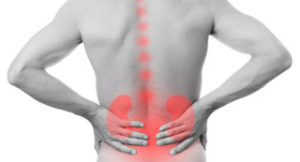
Lumbar spinal stenosis can lead to chronic pain in the legs that worsens with movement. Individuals with this condition may experience periods of comfort, usually associated with a limited physical activity. However, walking for any length of time may bring with it the pain in the legs. To improve comfort, a person may lean forward when standing. Over all, the poor posture that alleviates discomfort could prove detrimental to long-term spine health. For this reason, it is important to consult with your orthopedic physician regarding symptoms that may indicate spinal stenosis.
Therapy
Because lumbar spinal stenosis can occur to varying degrees, it may be possible to manage the condition with non-surgical therapies such as:
- Lifestyle modifications such as using a walker or cane.
- Physical therapy exercises tailored to spinal stenosis may be prescribed. Regular exercise may also be tailored to improve comfort, such as riding a stationary bike versus running on a treadmill.
- Over the counter, anti-inflammatory medications may improve comfort in mild to moderate cases.
- More severe pain may be treated with epidural injections of prescription steroid solution that decreases inflammation around the spine.
The above-mentioned treatments for lumbar spinal stenosis are focused on management. If non-surgical remedies and lifestyle changes do not improve a person’s ability to perform everyday activities, or if the problem progresses to the point where a quality of life is affected, surgery may be the best option for pain relief.
Surgery for Spinal Stenosis
Surgery is typically the last-line defense against spinal stenosis. However, it should not be ruled out completely. Lumbar laminectomy is the most common procedure to alleviate the symptoms of spinal stenosis in the lower back, and this surgical solution has a very high success rate in the 80 percent range.
schedule a consultation
We are happy to speak with you about the symptoms of lumbar spinal stenosis. Learn more from your NYC orthopaedic surgeon Dr. Todd Albert at 212-606-1004.


